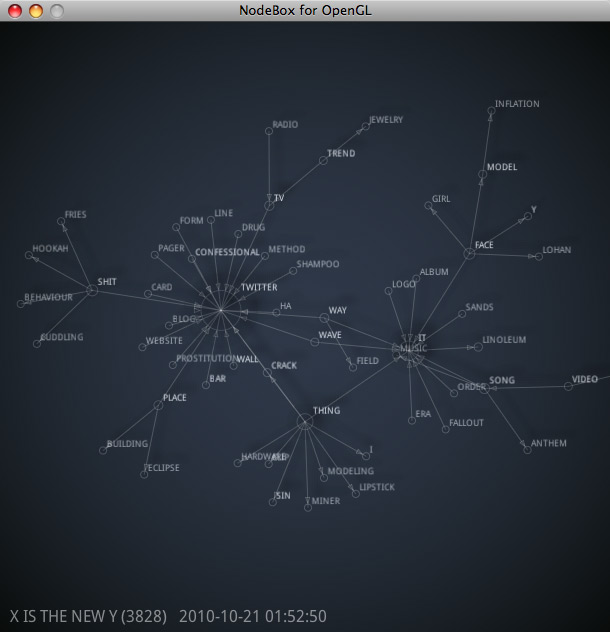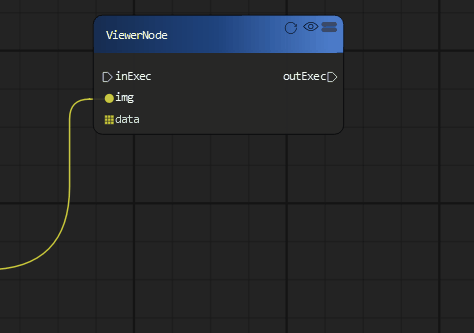

NODEBOX GUI INSTALL
Ubuntu: sudo apt-get install python-pyglet GNU/Linux users can use their package management system to install Pyglet.
NODEBOX GUI FOR MAC OS X
This is fine for Mac OS X 10.5, on 10.6+ (Snow Leopard) this is a 64-bit Python and you either need to install a 32-bit version (better Pyglet + Pysco support), or switch the current version to 32-bit mode by executing the following command from the terminal (more info here):ĭefaults write Prefer-32-Bit -bool yes On Mac OS X, Python is already installed. It works on all platforms if you have Python and Pyglet installed. NodeBox for OpenGL is built on the excellent Pyglet module. In: Applications of Evolutionary Computation, Part II, LCNS 6625, pp. Generative art inspired by nature, in NodeBox. City In A Bottle: Nicolas Marinus, Ludivine Lechat, Tim Vets, Frederik De Bleser, Tom De Smedt.ĭe Smedt T., Lechat L., Daelemans W.Contributors: Karsten Wolf, Tuk Bredsdorff.Contributing authors: Frederik De Bleser, Giorgio Olivero, Lieven Menschaert.We also credit Lucas Nijs and the Experimental Media Group at Sint Lucas Antwerpen, and Walter Daelemans and the Computational Linguistics Research Group at CLiPS, University of Antwerp for valuable input and support. The documentation was established as part of an artistic research project for the Interuniversity Microelectronics Centre (IMEC), Leuven. This version of NodeBox for OpenGL has been developed by the City In A Bottle team, with funding support from the Flemish Audiovisual Fund (VAF). It's not as fast as anything in native C, but quite a bit faster than the classic NodeBox. NodeBox for OpenGL can be used for simple games, interactive media installations, data visualization and image compositing. The original goal is to implement a small game engine for City In A Bottle.

It opens the main application window with n().įrom import Flock It defines a draw() function and attaches it to the canvas, so that it will be drawn each animation frame. It imports the aphics module with the standard set of drawing commands. To get started, try out some examples, or open and edit examples/test.py.īelow is a typical NodeBox script. This will open an application window with the output of your script. The documentation works in conjunction with the examples folder: subjects are touched here and demonstrated in more detail across various examples.įrom the command line, you can run a script with: python example.py (or command-R in TextMate). Users are assumed to have knowledge of Python (functions & classes) and NodeBox (the original docs are more verbose). You can use the IDLE editor bundled with Python.
NODEBOX GUI CODE
NodeBox for OpenGL does not have a built-in code editor. You'll need a 32-bit Python (version 2.5 or 2.6) and Pyglet to run it.

Screenshot: examples/07-filter/03-mirror.py Quick overview It has built-in support for paths, layers, motion tweening, hardware-accelerated image effects, simple physics and interactivity.

It is built on Pyglet and adopts the drawing API from NodeBox for Mac OS X ( ). NodeBox is an open source offering, that is currently available in a few flavors, the latest incarnation being NodeBox 3 as a completely cross-platform solution running under Mac OSX, Windows, and Linux.NodeBox for OpenGL is a free, cross-platform library for generating 2D animations with Python programming code.
NODEBOX GUI HOW TO
Here, in three parts, the getting started with NodeBox series looks at how to get up and running with NodeBox, how the NodeBox interface works and how ti create new nodes and connect the nodes together Continuing on to show the core idea behind NodeBox with a look behind list processing, the various types that are incorporated in NodeBox, and a small example of type conversion. NodeBox provides a novel way for working with images through the use of independent task nodes that you are able to string together to produce images, similar to Softimage’s ICE, or any other node based workflow would operate. We’ll show automatic type conversion in action and show an example where we do the type conversion ourselves In this video we’ll explain the different types available in NodeBox and how they interact. Recently, the Experimental Media Research Group have updated some of NodeBox’s tutorials providing a more comprehensive look at getting started with NodeBox for creating Procedural images.
NODEBOX GUI FREE
NodeBox has been around for a while, as a free and Cross-platform, node-based Graphical User Interface for creating procedural and generative designs, data visualizations as well as animations.


 0 kommentar(er)
0 kommentar(er)
